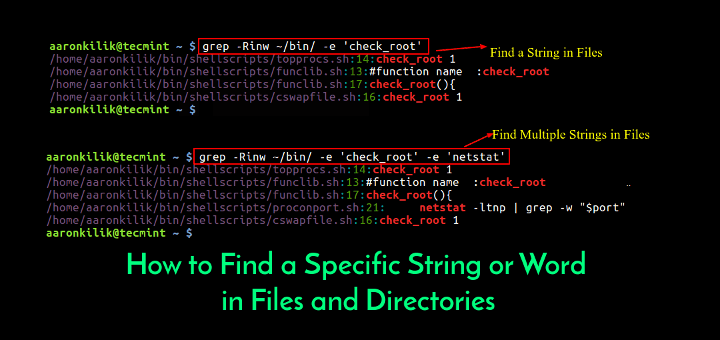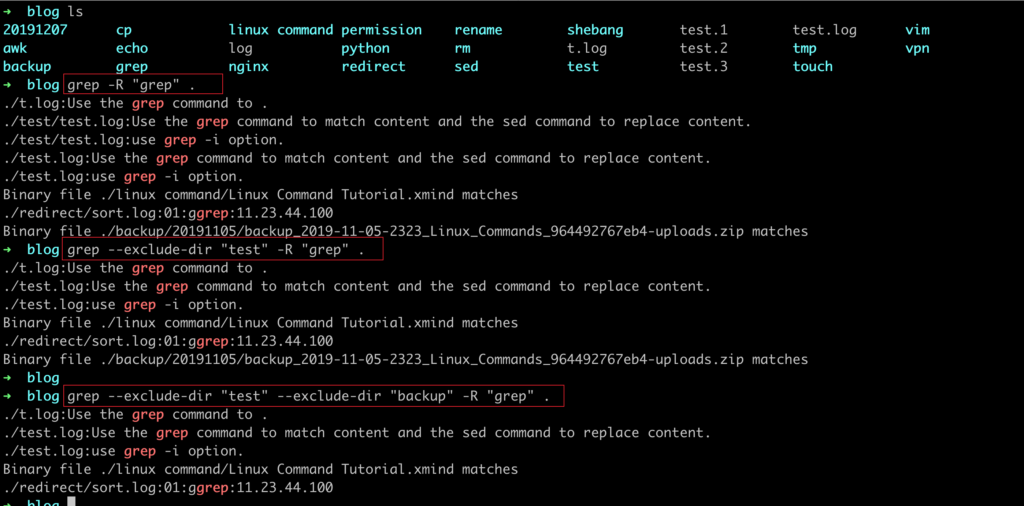

The following command will print the same output: $ grep -R -include=*. Test/log/app_20200301.log:DATETIME - SQLException has OccurredĪs we can see, the file test/app/readme.md appears in the output as well.Īlternatively, we can also use one single –include option and let the GLOB expression contain multiple extensions. Test/log/app_20200401.log:DATETIME - ClassCastException has Occurred

Test/log/app.log:DATETIME - NullPointerException has Occurred Test/app/change_log.log:Fix the NullPointerException Problem when calling external APIs Test/app/readme.md: - Exceptions are well handled Now, let’s search for the word “Exception” on *.log and *.md files: $ grep -R -include=*.log -include=*.md 'Exception' test

#Linux grep for file type how to
Understanding how to use it gives you the ability to easily find files via the terminal. Grep is a powerful tool for searching files in the terminal.

In contrast with ^, $ specifies patterns that will be matched if the line ends with the string before $. This pattern means that the grep will match the strings whose lines begin with the string specified after ^. Grep also allows basic regular expressions for specifying patterns. With option -R, searching files within directories and subdirectories becomes possible. If you try doing so, you'll get an error ("Is a directory"). R (-dereference-recursive) - recursive searchīy default, grep cannot search directories. The grep commands most basic use is to look for a string (text) in a file. The grep command, which stands for 'global regular expression print,' is one of Linuxs most powerful and. The value passed to -C would be used for -A and -B. Grep Command in Linux (Find Text in Files) Introduction. There's also a -C (-context) option which is equal to -A + -B. A 1 means one line after the matched line and -B 1 means one line before the matched line. A (-after-context) and -B (-before-context) - print the lines after and before (respectively) the matched pattern grep grep grep.txt -A 1 -B 1 With option -o, only the matched pattern is printed line by line. o (-only-matching) - print only the matched patternīy default, grep prints the line where the matched pattern is found. With the option -w, grep ensures that the matches are exactly the same pattern as specified. This means that grep yo grep.txt will print the same results as grep yo grep.txt because 'yo' can be found in you. `-w` (-word-regexp) - print matches of the whole wordīy default, grep matches strings which contain the specified pattern. # all files in the current directory that matches l (-files-with-matches) - print file names that match a pattern # command 1 i (-ignore-case) - used for case insensitivity # command 1ĥ. Notice that we also used option -n? Yes, you can apply multiple options in one command. v (-invert-match) - prints the lines that do not match the specified pattern grep you grep.txt -v -n This is because it is concerned with the number of lines where the matches appear, not the number of matches. Note that if there was another 'you' on line one, option -c would still print 2. c (-count) - prints the number of lines of matches grep you grep.txt -c If you look at the result we have above, you'll notice there are no line numbers, just the matches. This prints out the matches for the text along with the line numbers. Let's look at nine of them while applying them to the example above. You is expected to have a different color than the other text to easily identify what was searched for.īut grep comes with more options which help us achieve more during a search operation. The result for this is: Hello, how are you The following grep command will search for all occurences of the word 'you': grep you grep.txt If there is no match, no output will be printed to the terminal.įor example, say we have the following files (called grep.txt): Hello, how are you The result of this is the occurences of the pattern (by the line it is found) in the file(s). You can also use the wildcard (*) to select all files in a directory. Note that single or double quotes are required around the text if it is more than one word. Without passing any option, grep can be used to search for a pattern in a file or group of files. In this article, we'll look at how to use grep with the options available as well as basic regular expressions to search files. Grep comes with a lot of options which allow us to perform various search-related actions on files. It is a command line tool used in UNIX and Linux systems to search a specified pattern in a file or group of files. Grep stands for Globally Search For Regular Expression and Print out.


 0 kommentar(er)
0 kommentar(er)
